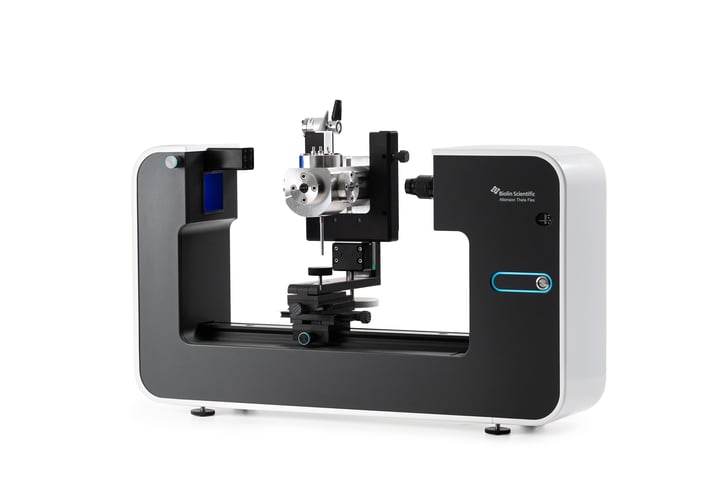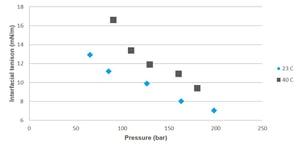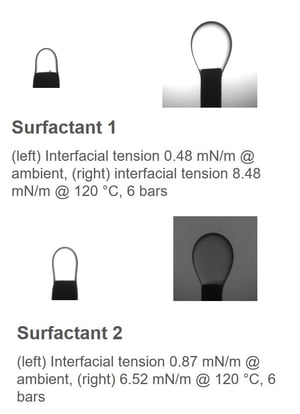
Different enhanced oil recovery methods are used to alter the wettability of the reservoir rock. To study the wettability alteration at the reservoir conditions, an instrument where the measurements can be done at high pressures and temperatures is needed. High pressure tensiometer offers an excellent tool for these measurements. It enables the study of interfacial tension and the contact angle at various experimental conditions.
The interfacial tension between brine and CO2 is a measure of the interfacial forces acting between these different phases. These forces play an important role in determining the effectiveness of the CO2-enhanced oil recovery as they affect the efficiency of the CO2 penetration into the reservoir pores. The measurements should be done at elevated temperatures and pressures to gain information on the interfacial interactions at the reservoir conditions. Surfactants are often used to decrease the interfacial tension and their behavior is also dependent on the pressure and temperature.
These forces play an important role in determining the effectiveness of the CO2-enhanced oil recovery as they affect the efficiency of the CO2 penetration into the reservoir pores. The measurements should be done at elevated temperatures and pressures to gain information on the interfacial interactions at the reservoir conditions. Surfactants are often used to decrease the interfacial tension and their behavior is also dependent on the pressure and temperature.

Surfactants that perform well at ambient conditions, might behave differently when temperature and pressure are raised. One of the key factors in surfactant development is the ability to test them in the conditions they are intended to be used. High pressure tensiometer can be used to measure interfacial tension between oil and brine with surfactants at high pressures and temperatures.
Carbonated seawater injection as an enhanced oil recovery method has gained a lot of attention. It is shown that it can be more efficient than conventional CO2 flooding. To study the effect of CO2 on reservoir rock wettability can be done by using high pressure tensiometer. The measurements are done by placing a drop of hydrocarbon on solid (typically core sample) surrounded by brine with dissolved CO2.

If you would like to download the slide deck showing the previous examples as well as some of the main features of the instrument, please click the button below.
Nanoparticles alone or integrated with conventional enhanced recovery processes have shown promising performance in improving oil recovery.
Studies show the influence of EOR agents on the reservoir rock wettability. Studies are not considering the reservoir conditions i.e. high pressure.
There are three commonly used wettability measurement techniques for oil reservoir characterization; Contact angle, Amott-Harvey, and USBM.
Using so-called smart water flooding has increased interest in both sandstone and carbonate reservoirs due to its low cost and minimum impact on the environment.
Most commonly used methods to study reservoir wettability are Amott-Harvey, USBM, and sessile drop contact angle.
Carbonate reservoirs are characterized as intermediate to oil- wet. Altering the wettability of the carbonates has been proposed as one of the main mechanisms for enhanced oil recovery.
Unconventional oils, such as heavy oil, extra heavy oil, and bitumen, normally exist tightly on host solids such as rocks, sands and clay minerals. Successful liberation of unconventional oil from solids is essential for effective recovery.
In enhanced oil recovery wettability plays an important role as that determines the interactions between the solid (rock) and the liquids in the reservoirs (crude oil, brine). Wettability has been recognized as one of the key parameters controlling the remaining oil-in-place.
